Third Edition Social Media
Third Edition
Social Media
How to Engage, Share, and Connect
Regina Luttrell
ROWMAN & LITTLEFIELD
Lanham Boulder New York London
Executive Editor: Elizabeth Swayze
Associate Editor: Megan ManzanoSenior Marketing Manager: Kim Lyons
Marketing Manager: Kim Lyons
Interior Designer: Ilze Lemesis
Credits and acknowledgments for material borrowed from other sources, and reproduced with permission, appear on the appropriate page within the text.
Published by Rowman & Littlefield
An imprint of The Rowman & Littlefield Publishing Group, Inc.
4501 Forbes Boulevard, Suite 200, Lanham, Maryland 20706
www.rowman.com
Unit A, Whitacre Mews, 26-34 Stannary Street, London SE11 4AB, United Kingdom
Copyright 2019 by The Rowman & Littlefield Publishing Group, Inc.
Second Edition 2015.
All rights reserved. No part of this book may be reproduced in any form or by any electronic or mechanical means, including information storage and retrieval systems, without written permission from the publisher, except by a reviewer who may quote passages in a review.
British Library Cataloguing in Publication Information Available
Library of Congress Cataloging-in-Publication Data
Names: Luttrell, Regina, 1975 author.
Title: Social media : how to engage, share, and connect / Regina Luttrell.
Description: Third edition. | Lanham : Rowman & Littlefield, [2019] | Includes bibliographical references and index.
Identifiers: LCCN 2018008430 (print) | LCCN 2018009439 (ebook) | ISBN 9781538110805 (electronic) | ISBN 9781538110782 (cloth : alk. paper) | ISBN 9781538110799 (pbk. : alk. paper)
Subjects: LCSH: Online social networks. | Social media. | Public relations.
Classification: LCC HM742 (ebook) | LCC HM742 .L874 2019 (print) | DDC 302.23/1dc23
LC record available at https://lccn.loc.gov/2018008430
 The paper used in this publication meets the minimum requirements of American National Standard for Information SciencesPermanence of Paper for Printed Library Materials, ANSI/NISO Z39.48-1992.
The paper used in this publication meets the minimum requirements of American National Standard for Information SciencesPermanence of Paper for Printed Library Materials, ANSI/NISO Z39.48-1992.
Printed in the United States of America
Brief Contents
Contents
)
Control
In a digital age, powered by social technologies, the operative word is control. When literally everyone has a voice controlling the dialogue, discussion, and debate, the resulting advantage is incredibly powerful. Customers and employees now determine what gets made and what gets implemented, causing companies to rethink the entire business model and relationship spectrum.
The Transition to Interpreter
For public relations professionals this shift is having a profound impact on the value and efficacy of our work. Understanding the new mindset of customers and employees, who now direct the actions and reactions of organizations, being in PR is akin to asking Who are you? rather than stating Heres what I want you to know. With consumers continuing to baffle marketers and communicators migrating in and out of new platforms, defying conventional methods for engagement, and choosing to listen to new voices in the purchase journey, organizations relying on traditional brand sustainability strategies find themselves in the slow lane to nowhere.
The pervasive challenge can be captured in one word: noise.
Noise is often alluring but deadly. It causes brands to think audiences are listening or, worse, advocating on their behalf. It can cause bias inside an organization. For many marketers and communicators, the solution is to focus on exacerbating the symptoms. Produce and deploy more content. Reemphasize the brand story. Remind people who you are in new and novel ways. Invest in branded entertainment or native advertising to perpetuate the myth. But in todays attention-deficit marketplace, less is actually better. And by less I mean simple, clear, and relevant. In our work with organizations around the globe spanning multiple industries and segments, branding is about defining the why . Why do you exist? What makes you relevant? Why should your audiences care? Does your workforce believe? It also demands that a digital and social analysis be conducted internally and externally to discern where relevance can be found among key stakeholders.
This oftentimes can clear a path toward a new destination or white space. A place your brand can thrive anew. In a social/digital reality, brands need to be discovered, not sold. People need to experience and, yes, maybe even challenge the efficacy of your brand. Doing so creates a community of interest and an airtight affinity for your brands essence. For PR professionals looking to discern the relevance of social in todays environment, five critical areas must be explored:
. Promise: First and foremost, is your promise meaningful and purposeful to your stakeholders? How does social media planning reinforce this notion?
. Position: Where do your stakeholders need to discover you? Are there specific themes, ideals, or conversations that capture your brand and place it in the proper context? What is your mindshare?
. Voice: So many organizations and brands today have simply lost their voice. Many dont realize it. Voice speaks to tone, depth, courage, and perspective. Is your voice resonating properly with stakeholders? Do you actually hear you?
. Narrative/Platform: Where do you live? What is your story and how do you articulate it via audiences over social and digital channels?
. Outreach: How do you interact with the world? Is it where your audiences are? Can they discern you consistently?
Social Media: How to Engage, Share, and Connect is as much about comprehending what your audiences need and expect from you as vice versa. As one senior communications officer recently said, social media is about rediscovering the romance of your promise through the conversations. To that end, organizations must solve for two things: relevance and differentiation!
As mentioned, if you are not relevant today to the people who allow you to existcustomers, employees, influencersyou arent real. Relevance in how your sector or category is moving. Relevance in your product offering. Relevance in your message. Relevance in your value proposition. Relevance in evolution. And if you are not differentiated in your promisethe expectations people need from your brand experienceyou wont command the respect (and value) necessary to sustain the business.
It is here where social media and analytics are the game changer.
Understanding your impact from a digital and social standpoint uncovers insights about how you are perceived and believed both internally and externally. Such insight then informs all of the above areas, resulting in the relevance and differentiation necessary.
We are living in a completely fluid time.
One that changes in the blink of an eye.
To be successful, organizations need to adopt the right mindset and recalibrate marketing and communications to be more agile, nimble, and confident in the vagaries of the marketplace.
Only then will brands truly survive and thrive in an engaged economy where customers truly own brands; employees truly own culture; and organizations must continually listen, connect, innovate, and involve multiple stakeholders to win.
To paraphrase the immortal David Ogilvy, we now have a chance to listen to our story versus tell it. Social media is all about stories. Its all about discovery. Both provide context, meaning, purpose, and legitimacy. Without a real understanding of what PR is about in a social and digital reality, youre truly missing its strategic import.
That is exactly what Regina Luttrell has brought out in this incredible book. Her background in leading strategic marketing and public relations for Fortune 500, government, and nonprofit organizations and her expertise in social media and digital platforms as a core component to providing customers relevance and value are captured in the pages here. As you read and assimilate its contents, be prepared to rethink your approach, your perspective, and your actions regarding social media. Social media is a bridge, a lens, and a listening tool allowing brands to build relationships, see trends and behaviors clearly, and capture insights to improve business and societal realities.
Next page

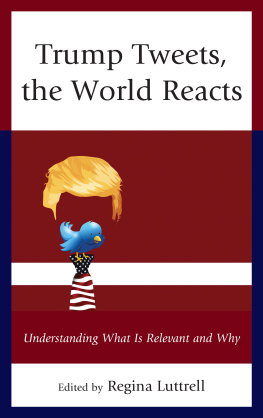
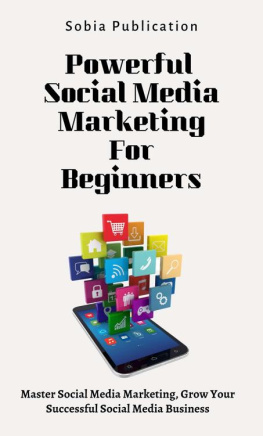

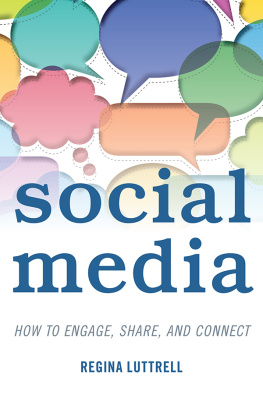
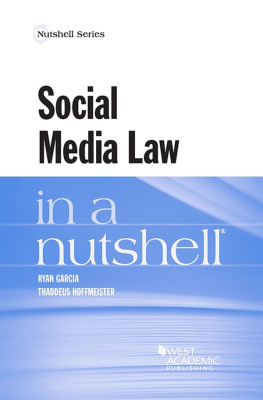
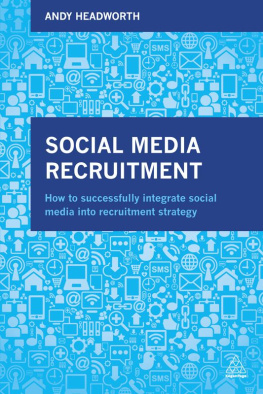
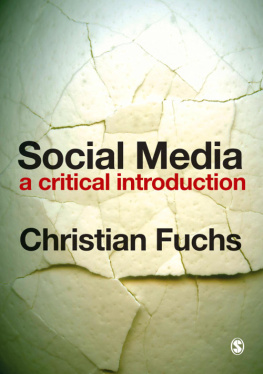
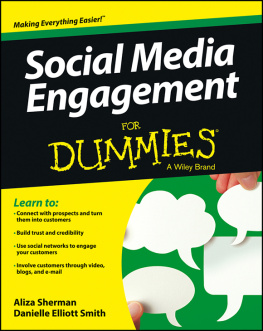
 The paper used in this publication meets the minimum requirements of American National Standard for Information SciencesPermanence of Paper for Printed Library Materials, ANSI/NISO Z39.48-1992.
The paper used in this publication meets the minimum requirements of American National Standard for Information SciencesPermanence of Paper for Printed Library Materials, ANSI/NISO Z39.48-1992.